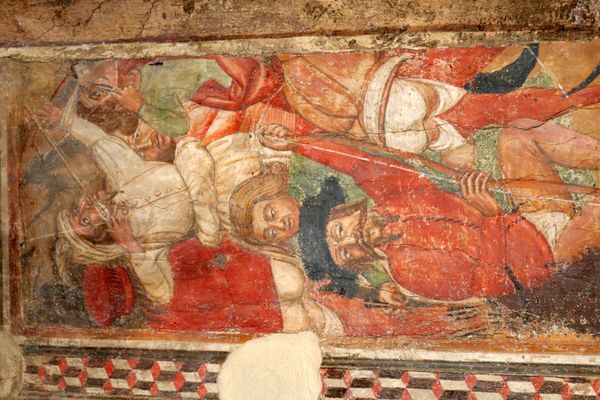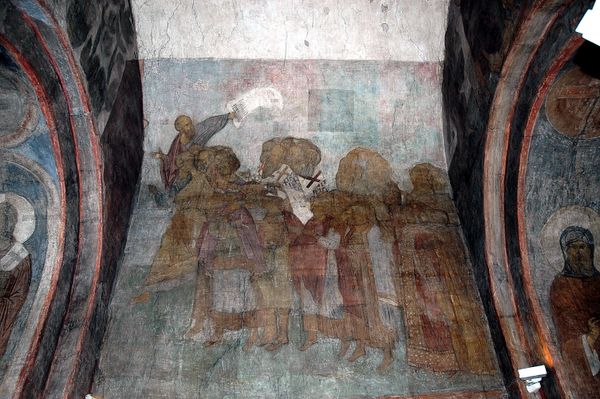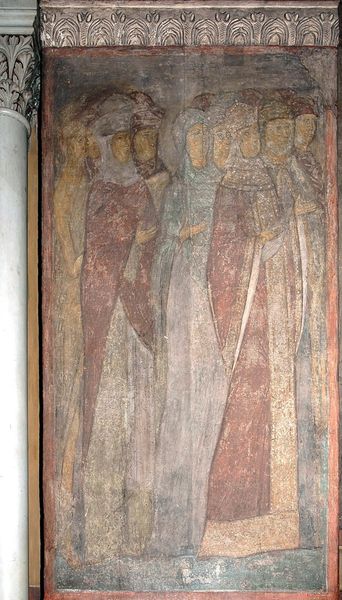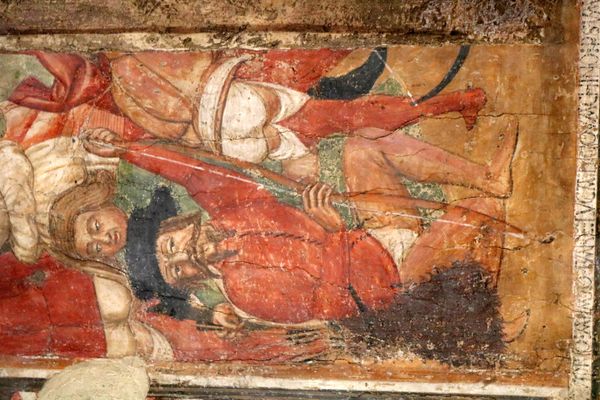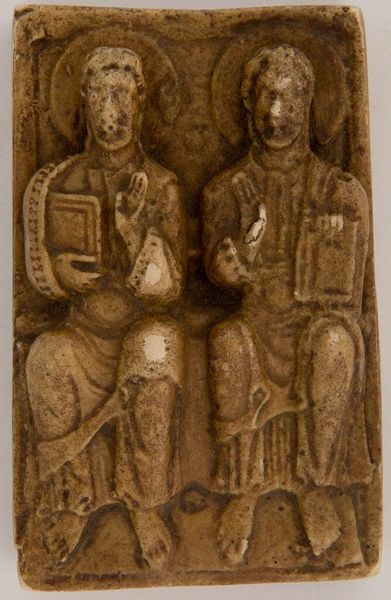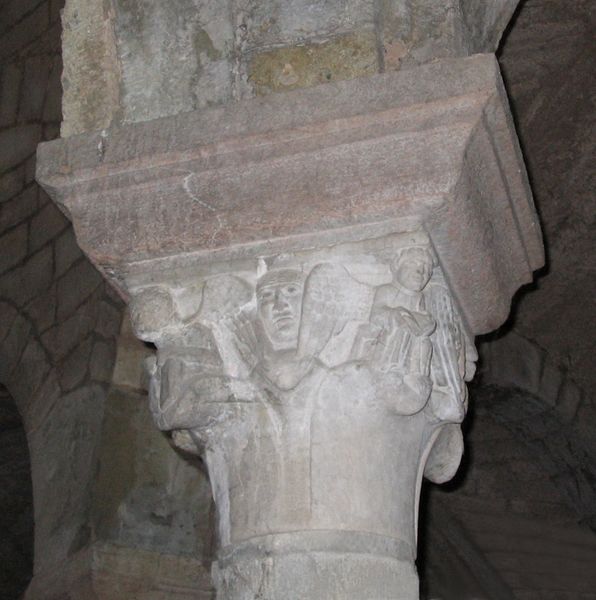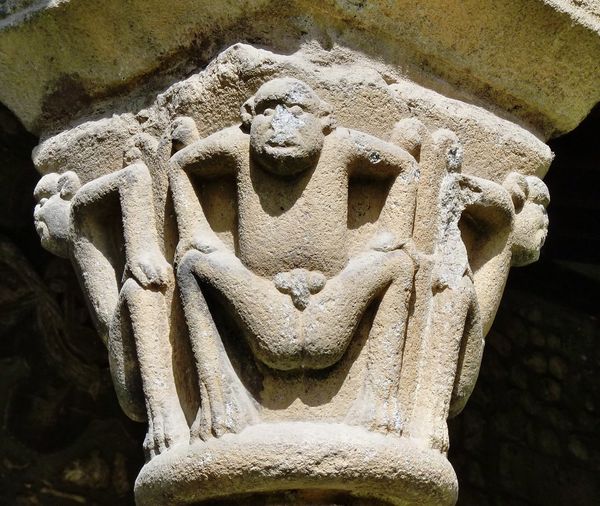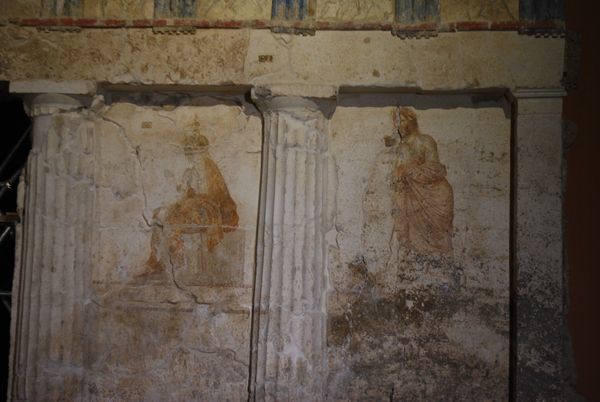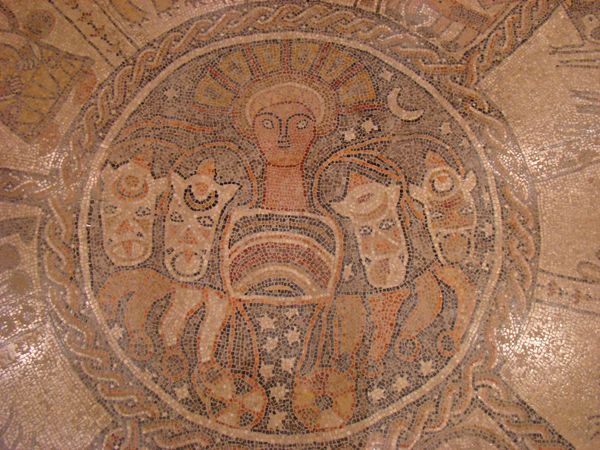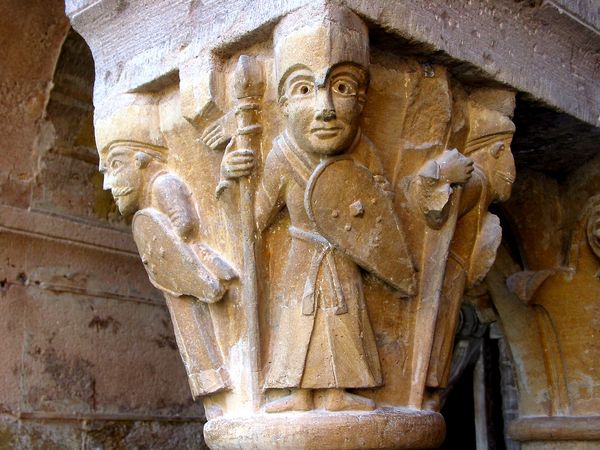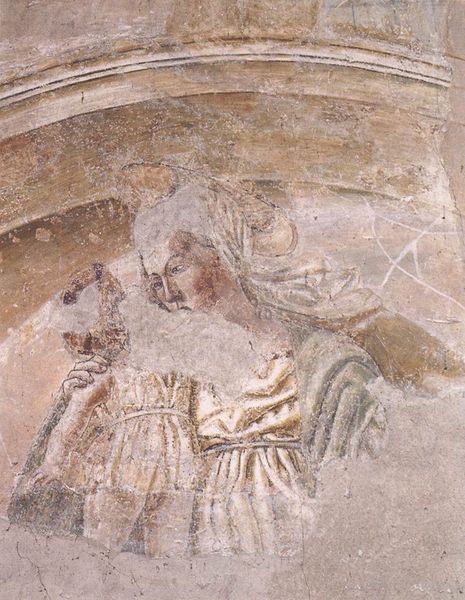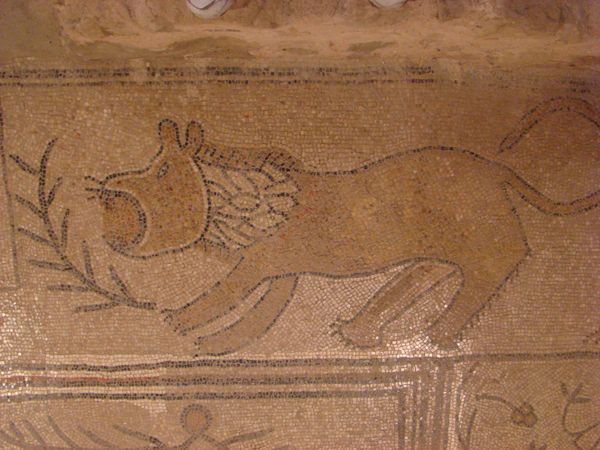
carving, sculpture
#
medieval
#
carving
#
stone
#
sculpture
#
figuration
#
romanesque
#
sculpture
#
group-portraits
Copyright: Public domain
Editor: Here we have a stone carving from around the year 1200, titled "Capital, Church of St. Christopher of Rio Mau." What strikes me is the grouping of these three figures. They almost seem to be sharing a secret. How do you interpret this work? Curator: This Romanesque capital, with its grouping of figures, invites us to consider power dynamics within the medieval church and society. Who were these people, literally and figuratively holding up the Church? What were their roles and responsibilities? It's essential to investigate such pieces beyond the purely aesthetic and to question whose stories were being told—and whose were being actively suppressed. Were these literally donors holding the responsibility of the Church in the Rio Mau community? Editor: So, you are suggesting it's less about a literal interpretation and more about unpacking the context around their presence and purpose? Curator: Precisely. We should also think about the artistic agency within marginalized groups. How might those with lived experiences of marginalization subvert these dominant narratives to empower their group’s agency? Can art contribute to social change, or, conversely, is its primary function to preserve status-quo relations? These questions allow us to see this medieval carving through a more critical lens. Editor: That's fascinating. I'd been focusing on the artistic style itself, but considering its social context provides such a richer understanding. I’m compelled to approach these figures with that socio-historical framework you provided. Curator: Exactly! Approaching it this way makes our understanding and engagement so much more complex.
Comments
No comments
Be the first to comment and join the conversation on the ultimate creative platform.
